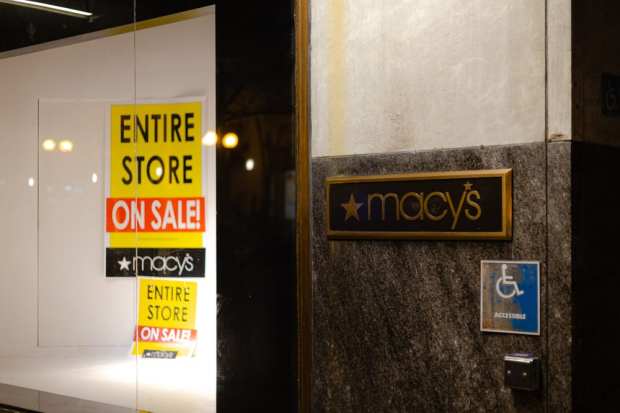Macy’s Woes Add To Tough Week For Malls

It’s been a tough week for malls. First, mall tenant Forever 21 was bought out by its landlords. Then, Sephora launched one of the most aggressive brick-and-mortar initiatives in recent memory in a decidedly non-mall fashion. Now, Macy’s has cut 125 more stores, with its CEO making blunt statements about the future of what was his bread-and-butter.
“We see a bifurcation of malls,” Macy’s CEO Jeff Gennette told investors on Wednesday (Feb. 5) during a meeting at the New York Stock Exchange. “The lower-tier malls continue to decline rapidly.”
So Macy’s is making moves to get away from low-performing malls. The first part of its new strategy is to double down on its off-price offerings, Backstage and Bloomingdale’s Outlet. In 2020, the company plans to open an additional 50 Backstage store-within-store locations and seven additional freestanding, off-mall Backstage stores.
Macy’s also announced on Wednesday (Feb. 5) that it plans to ramp up focus on its private brands, which it expects will comprise a quarter of its sales by 2025, per a report. “Private brands are already among our highest margins, but we continue to find ways to improve,” CMO Patti Ongman said in a statement to the NYSE. “We’re building new sourcing and supply chain capabilities.”
The company is also testing a new store format, Market by Macy’s. This new format, which is smaller than a typical Macy’s store, will be located outside the mall in “lifestyle centers.”
“Market by Macy’s will feature a mix of curated merchandise and local goods, as well as local food and beverage options and a robust community events calendar,” noted Macy’s CEO Jeff Gennette.
The first Market by Macy’s is slated to open in Dallas this week.
Not all malls are underperforming. In fact, Gennette says the most valuable stores will be redesigned and “optimized.” According to statistics from the International Council of Shopping Centers, about 105 million people – roughly half of all U.S. adults – visited one of the 1,100 malls in the country in 2019, averaging 2.1 monthly visits. But there’s no mistaking that a key anchor tenant is completely re-evaluating the value of mall locations.
Three issues have shown themselves this week as key to the mall crisis.
Department Stores
As Forever 21 and Macy’s have shown, some department stores have deep financial and location issues. But those aren’t the only problems. For example, companies that sell through department stores are getting hit where it hurts – on Wall Street. Although it had a decent Q4 saleswise and has been amping up its D2C business, Ralph Lauren got hit by analysts for its dependence on department stores.
“Ralph Lauren’s early success [as a] North American direct-to-consumer [retailer] so far is impressive,” one analyst wrote, “but we’re still wary about how U.S. department store customers will respond, given already soft brand demand in the channel (sell-out is down about high- to mid-single-digit percentage) and the competitive environment.”
Anchor Tenant Concepts
Department stores are anchors. So if they don’t work anymore, what will? A few Harvard Business School students have some ideas, which have been reverberating throughout the retail industry. Through a data science study and an intense series of algorithms, a working paper from three Harvard students proves (they say) that a high-tech, affluent retailer can raise the tide of a mall.
If you guessed Apple, you’re right. “No store directly affects Apple, but Apple affects many players, signifying its status as the anchor store of present-day retail. Apple negatively affects discount stores, but positively affects upscale and Microsoft stores,” states the paper. “The counterfactual simulations suggest that some stores would decide not to join a mall, despite favorable market conditions, due to the expected competitive entry of other stores.”
Embracing Change
Apple or not, malls need to change – and they have been slow to do so. Says Aptos Retail Analyst Dave Bruno: “There’s really no mystery about what happened: Malls and mall stores simply failed to create experiences that gave people a reason to get off the couch, put down their tablets (or phones or laptops) and head to the local mall. So traffic declined. And then stores failed. I know it’s like arguing about which came first, the chicken or the egg, but there’s a critically instructive lesson here: I believe stores failed only after we failed to engage shoppers in new and exciting ways that aligned to their lifestyles, thereby causing a decline in traffic … and not the other way around.”
Like it or not, change is coming to mall-based retail. If this week is any indication, yet another retail revolution may be in motion.
